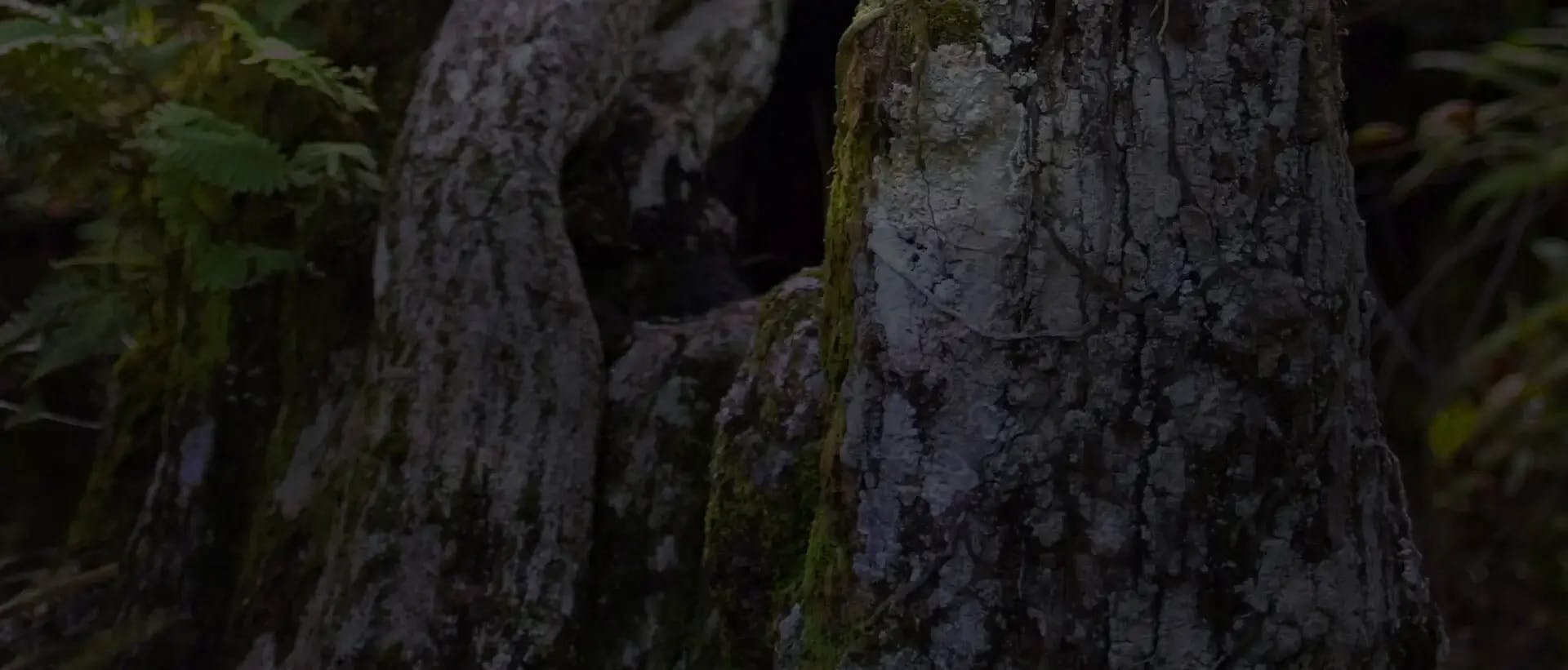
SITF Submissions and Findings
The Species Identification Task Force receives submissions from orchid judging centers or exhibitors.

Thecostele alata 'Louisiana' HCC 2025-12-20

Bulbophyllum odoratum var. obtusisepalum Micheline Fabre CHM 2025-12-20

Epidendrum wrightii 'Elizabeth Hamilton' AM 2025-12-20

Polystachya dendrobiiflora 'Jardin botanique de Montréal' CCM 2025-12-19

Micropera utriculosa 'Jardin botanique de Montréal' CCM 2025-12-16
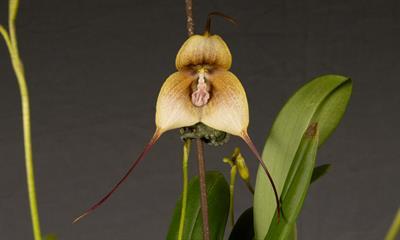
Dracula aphrodes 'Mary's Peak' HCC 2025-12-09
Meiracyllium gemma 'Bill Bartlett' CBR 2025-11-27
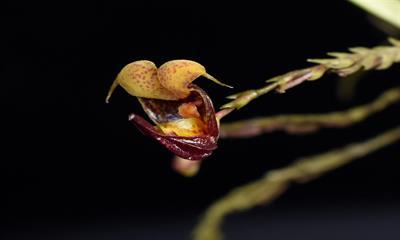
Scaphosepalum anchoriferum 'Dayana' AM 2025-11-26
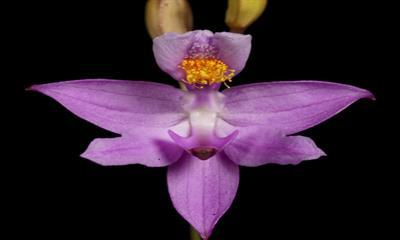
Calopogon barbatus 'Ranga's Bubble Gum' CHM 2025-11-26
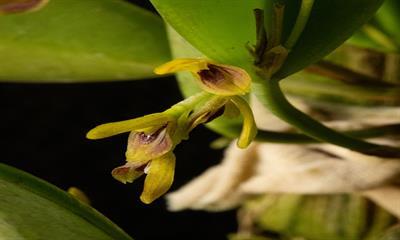
Pleurothallis (Acianthera) macropoda 'Bryon' CBR 2025-11-23

Bulbophyllum weberi Gentle Giant CCM 2025-11-17

Encyclia pyriformis 'Kathleen' JC 2025-11-17
Finding
SITF confirms this plant as Encyclia pyriformis (Nov 2025). This plant is a good match to E. pyriformis and to the first of prior awards, a CHM in 2003, which was identified by John Beckner, a taxonomist in Selby Gardens. The submitted photos are a close match to the photos of E. pyriformis in Orchid Roots and in the IOSPE. It also matches E. pyriformis in Withners, The cattleyas and their Relatives, Volume 4, where there are two drawings of this species; one with 2 leaves per pseudobulb and one with one leaf per pseudobulb.
Dendrobium mindanaense 'Amelia Delphia' CHM 2025-11-17

Epidendrum cirrhochilum 'J&L' CBR 2025-11-16

Maxillaria ferruginea 'Jardin botanique de Montréal' CHM-2025-11-15

Stelis segoviensis 'Jardin botanique de Montréal' CCM 2025-11-14

Coelogyne monilirachis 'Gayle' AM 2025-11-12
Finding
SITF has determined this plant to be Coelogyne incrassata, not Coelogyne monilirachis (Nov 2025). Photos of C. monilirachis in the IOSPE and in the orchidroots.com do not show the transverse band on the lip as pictured on this plant. The key in the Coelogyne Section from The Genus Coelogyne - A Synopsis Book by Dudley Clayton keys this out as C. incrassata var. incrassata based on the 'translucent pale brown' color, the three keels terminating at the base of the midlobe (also in the key for monilirachis) and the white lip with a 'transverse red bar' which all agree with this flower. The photo shown in the POWO does not appear to agree with other sources, including the Coelogyne book by Clayton.
Cleisostoma scortechinii 'M&M Orchids' CBR 2025-11-09
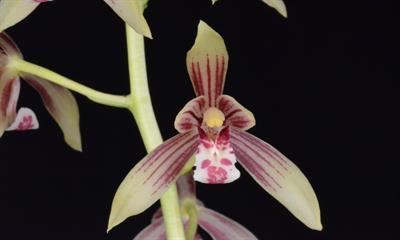
Cymbidium haematodes Seed Studio Rainbow HCC 2025-11-06
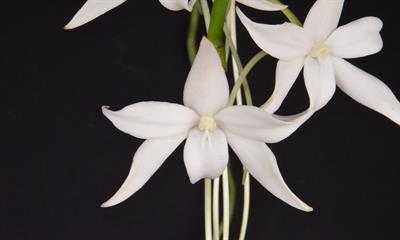
Aerangis modesta 'Chippewa' AM 2025-11-05
Finding
Upon re-examination, SITF has determined this plant to be Aerangis articulata, not A. modesta or A. spiculata (Dec 2025). The spur of A. modesta is no more than 8cm and the spur on this plant is at least 14 or 15cm. The flowers of A. spiculata are birdlike like birds in a flight, whereas A. articulata flowers are more stellate as seen in photos on Botanica and IOSPE. The starlike flowers of this plant match the form of A. articulata better than A. spiculata. Also, A. spiculata's name is derived from two or three teethlike spicules found in the mouth of the spur. This key characteristic is absent in this plant. These flowers first opened at the apex of the inflorescence which according to Isobyl laCroix is A. articulata and is a match to A. articulata in Isobyl's book.
Prosthechea citrina 'Sunshine Sarah Goldberg' AM-CHALLENGE 2025-11-04
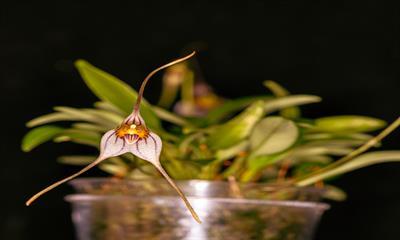
Masdevallia merinoi 'J&L' CHM 2025-11-03
Finding
SITF confirms this plant as Masdevallia merinoi (Nov 2025). A description and drawing of the species may be found on-line on epidendra.com at https://epidendra.com/taxones/Masdevallia/Masdevallia%20merinoi/Masdevallia%20merinoi%20PROT.pdf which matches this plant. Although the flower measurements may be a little small, the callous on the petal lower half and the pair of calli on the lip can be clearly seen which match the description of this species. Also, the type drawing by Carl Luer and a photo of M. merinoi can be seen on the IOSPE website.
Aerangis pallidiflora 'Alan' CBR 2025-11-03
Barbosella dusenii 'Chandra P' CCE 2025-11-02
Finding
SITF has determined this plant to be Barbosella cogniauxiana, not Barbosella dusenii (Dec 2025). The plant and flowers shown in the images of B. cogniauxiana in the POWO closely match this plant. These flowers are slightly larger than B. dusenii and there is no evidence of a lip with protruding calli or hairy basal cavity characteristic of B. dusenii. The lip on this flower has a shallower cavity and less prominent calli than would be characteristic of B. cogniauxiana. Luer's Icones 20 describes Barbosella dusenii as distinguished by the twice smaller vegetative parts, the tiny leaves being broadly elliptical. The flowers of B. dusenii are slightly smaller than those of B. cogniauxiana, and differ only in minor details of the lip. Both have shallow articulations with a bulbous tip of the column foot, but the pair of calli on the center of the disc is more prominent in B. dusenii.
Eulophia ugandae 'Powell' CBR 2025-10-25
Finding
SITF confirms this plant as Eulophia ugandae (Nov 2025). A description can be found at https://www.worldfloraonline.org/taxon/wfo-0000254528 for Oeceoclades ugandae (Rolfe) Garay & P.Taylor, which is synonymous with Eulophia ugandae. This plant matches photos of E. ugandae in the orchidroots.com.
Psychopsis sanderae 'Powell' CHM 2025-10-25
Finding
SITF confirms this plant as Psychopsis sanderae (Nov 2025). The column is very distinctive on this species. It matches the column on the flower closeup on the IOSPE website with what looks like osmophores on the ends of numerous stalks. It also matches the flower image of P. sanderae in Joao Almeida's side by side comparison images also shown in the IOSPE.
Pleurothallis (Acianthera) serpentula Bryon CBR 2025-10-25

Brassia andreettae 'Irene' CBR 2025-10-21
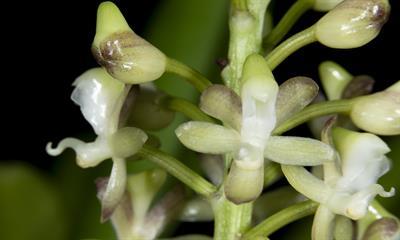
Micropera thailandica 'Irene' CBR 2025-10-21

Cymbidium haematodes 'Xi Yang Yang' AM 2025-10-21

FREE ACCESS: Orchid DealWire
Get notified when orchid vendors have special promotions and exclusive savings.
